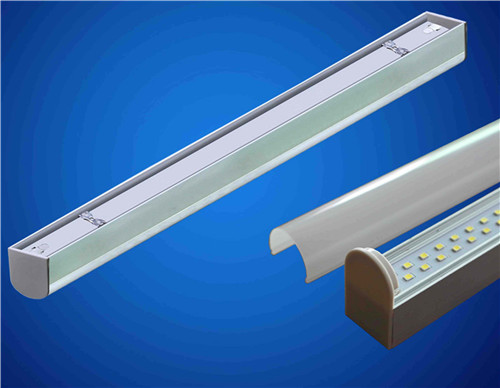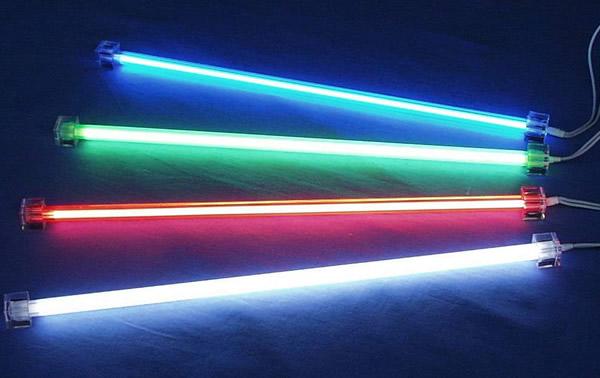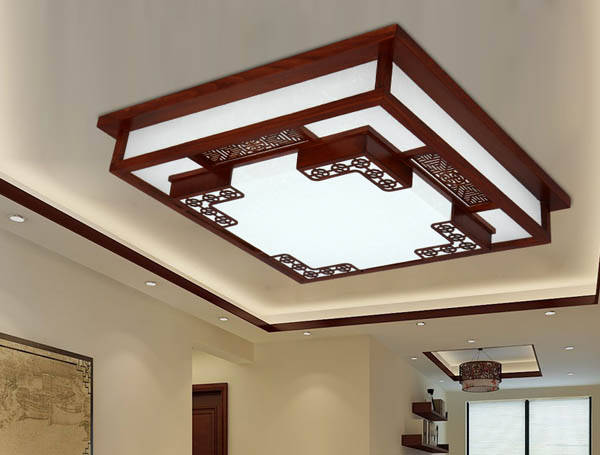4. Research on LED Optical Properties
The study of the technical characteristics of LEDs by the International Commission on Illumination (CIE) technical committee is divided into two divisions. Namely: Vision and Color Division (D1) and Light and Radiometry Division (D2).
The color rendering of white LEDs and related measurement issues are being studied, and D1: TC1-65, TC1-62, two draft documents on visual measurement of color tables and color rendering of LEDs have been forwarded.
Visual test results of color rendering index CRI.
The CRI calculation method is specified in the CIE 13.3-1995 publication. If the calculated CRI for the white LEDs contradicts the visual results, the documentation confirms that there is a discrepancy.
The technical report concluded that the CIE CRI does not apply when applying color rendering calculations including white LEDs. The technical committee recommended that D1 establish a new set of color rendering indices. These color rendering indices do not immediately replace the current CIE color rendering index calculation method. The new color rendering index is a supplement to the CIE CRI, and the calculation method to replace the current CRI can only be determined after the successful application and combination of the new color rendering index.
D2 established a special technical committee TC 2-45 to study the measurement methods of LEDs: The TC 2-45 document “Mea-surement of LEDS” has been published to replace the CIE 127 publication.
5. LED Luminous Efficiency Limit Value
LED luminous quantum efficiency
For a long time, semiconductor research experts have explored various new technologies to improve the internal and external quantum efficiency of LEDs.
In 2006, there were reports that the luminous efficiency of low-power white LEDs reached 100lm/W. In order to determine a reasonable expected value of LED luminous efficiency, it is necessary to calculate the limit value of LED luminous efficiency on the basis of photometry and colorimetry.
In October 1979, the tenth International Conference on Weights and Measures (CGPM) defined the new candela (cd). Candela (cd) is the luminous intensity in a given direction of a light source emitting monochromatic radiation frequency 540.0154 × 1012 Hz (wavelength 555 nm).
The radiation intensity in this direction is:
1cd=(1/683) W/sr (wavelength 555nm),
1cd=1lm/sr,
1W=683lm (wavelength 555nm).
If the power loss, internal quantum efficiency, and external quantum efficiency values are ignored, the luminous efficiency limit values of various light sources and LEDs can be calculated.
The spectral light efficiency of the human eye is not the same as the spectral power distribution of ideal isoenergy white light. Due to the spectral response characteristics of the human eye, after the ideal isoenergy white light is weighted and calculated, the limit luminous efficiency of the ideal isoenergy white light in the visible spectrum range can be obtained as 182.45lm/W.
Light Efficiency and Color Rendering
In the field of lighting, the birth of a new type of light source, its life and light efficiency are important quality indicators. However, its color rendering characteristics for various colors are another important quality indicator of the lighting environment.
The theoretical luminous efficiency of the two yellow spectral lines of the low-pressure sodium lamp can reach 450lm/W, and the actual luminous efficiency exceeds 200lm/W. However, due to its poor color rendering characteristics, it was eventually replaced by high-pressure sodium lamps and metal halide lamps.
Looking at the new light source of LED, the limit luminous efficiency of white LED will be higher, about 200lm/W, compared with the ideal equal energy white light under the condition of sacrificing some color rendering index Ra. For a white LED that is actually used in the lighting field, it is reasonable to set the target value of luminous efficiency at 150-160lm/W.
In addition to white LEDs for lighting applications, the luminous efficiency of LEDs of various spectrums can also be estimated from the data. Red (643nm), green (535nm), and blue (460nm) LEDs are used as three primary colors, and their limit luminous efficiency values can also be estimated based on data.
6. Comparison of LED and Traditional Light Sources
Compared with traditional light sources, LEDs have the following characteristics:
(1) LEDs are small in size and have various external dimensions, which are suitable for different applications.
(2) LEDs have a variety of colors, ultraviolet, purple, green, yellow, red to infrared, white LED spectrum.
(3) LED optical parameters are related to temperature,
(4) LED optical parameters are related to the observation angle,
(5) LEDs have various light distribution curves, and there is no definite optical axis.
The above-mentioned characteristics of LEDs bring many problems to the measurement of the optical characteristics of LEDs.
7. Measurement of LED Optical Properties
The optical characteristics detection of LED should be considered from the following characteristics:
(1) Luminous intensity (cd)
Luminous flux
Luminous flux is the total light energy that a light source emits into the surrounding space. The spatial distribution of the luminous flux emitted by different light sources is different. The unit of luminous intensity is candela, and the symbol is cd, which represents the luminous flux emitted by the light source within a solid angle of a unit steradian (the angle formed by the surface of the object to the point light source). 1cd = 1lm/1sr (sr: solid angle in steradian units).
light intensity
The luminous intensity of an LED usually refers to the luminous intensity in the direction of the normal (for cylindrical light-emitting tubes, its axis). If the radiation intensity in this direction is (1/683) W/sr, it will emit 1 candela (symbol cd). Since the luminous intensity of general LEDs is small, the luminous intensity is often used as a unit of candle light (candela, mcd).
How to Improve Luminous Efficiency
Due to the structural characteristics of the LED, in order to improve its luminous efficiency, a reflector is equipped at the bottom of the LED, which is actually a lamp itself. The light from each area has different focal points, it is not a point light source. Therefore, the inverse square law of distance in photometry does not apply when evaluating the luminous intensity of LEDs. Two currently internationally recognized measurement conditions are specified in the CIE127 publication.
The measurement results using the above two measurement conditions can be compared internationally. The A and B measurement conditions are not strictly according to the definition of luminous intensity. Hence the name “Average Luminous Intensity” (ALI).
Corrections for measuring probes:
Since the matching error of the measurement detector will cause the measurement error of the “average luminous intensity” (ALI), the matching error has a more serious impact on the measurement results of the red and blue LEDs. The spectral correction method can improve the measurement accuracy.
Requirements for LED luminous intensity measuring instruments:
- The solid angle should be measured correctly: dΩ=0.001sr (Condition A), dΩ=0.01sr (Condition B).
- The measurement of the mechanical axis is correct,
- Effective anti-stray light design,
- Precision V(λ) photodetector,
- Provide V(λ) photodetector spectral data to facilitate correction of measured values,
- Equipped with high stability power supply.
(2) Total luminous flux (lm)
Since the human eye has different sensitivities to electromagnetic waves of different wavelengths, we cannot directly measure the light energy with the radiant power or radiant flux of the light source. Instead, it must be measured by a unit based on the amount of light that the human eye perceives – luminous flux. The luminous flux is represented by the symbol Φ and the unit is lumens (lm).
The measurement of LED luminous flux, the application of distributed photometer can accurately measure the total luminous flux of LED. The premise is that the detector spectral response curve has been corrected. This is an absolute measure of the total luminous flux of an LED. However, the test equipment is expensive, and the integrating sphere is often used for measurement in the industry.
a. The size of the integrating sphere is as large as possible, which can reduce screen absorption and foreign body errors.
b. The greater the reflectance of the coating surface, the less the difference in the responsivity of the inner surface of the ball. In the current LED test, the surface reflectance of the coating is even greater than 98%.
c. Pay attention to the installation position of the LED under test. The emitted light should be aimed at an area where the response of the inner surface of the integrating sphere is uniform,
d. Apply auxiliary light source to reduce screen absorption and foreign matter error.
(3) Spectral characteristics, chromaticity coordinates, dominant wavelength measurement
The measurement of spectral characteristics, chromaticity coordinates, and dominant wavelength, according to the technical exchanges and relevant international comparison results of the three international LED expert meetings of the International Commission on Illumination (CIE), are now recommended as follows:
i. The national metrology department should adopt a double monochromator measurement system,
ii. Monochromator measurement system can meet the application of industrial sector,
iii. The chromaticity test results of the 1nm and 5nm spectral measurement bandwidths are relatively close, and the 5nm bandwidth can be used for measurement.
iv. The contrast measurement difference of the dominant wavelength is very small,
v. The relative error of the CCD measuring instrument is relatively large.
(4) Brightness (cd/m2)
Brightness is the intensity of light emitted by an object that the eye sees from a certain direction. The unit is candela/square meter [cd/m2], and the symbol is L. Indicates the luminous flux per unit solid angle per unit area of the illuminant in a specific direction. It is equal to the luminous intensity of 1 candela emitted on 1 square meter of surface.
(5) Color temperature
When the color of the light emitted by the light source is the same as the color radiated by the black body at a certain temperature, the temperature of the black body is called the color temperature of the light source. Expressed with absolute temperature K. When the color of the light emitted by the light source is close to the color radiated by the black body at a certain temperature, the temperature of the black body is called the correlated color temperature of the light source.







